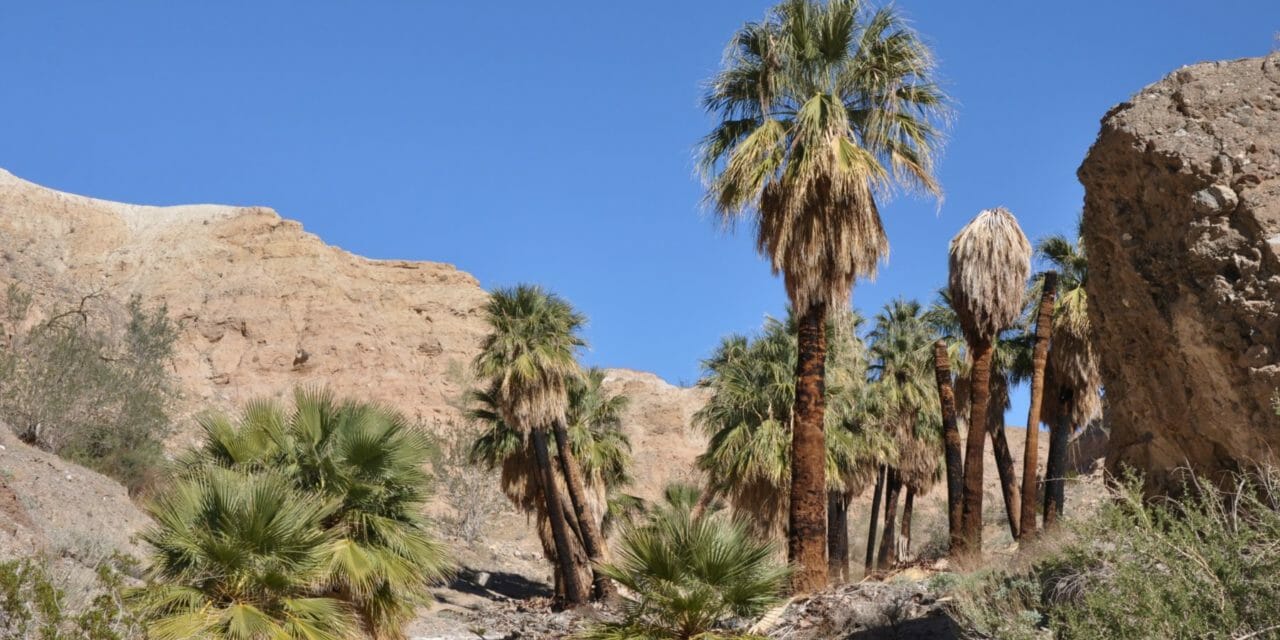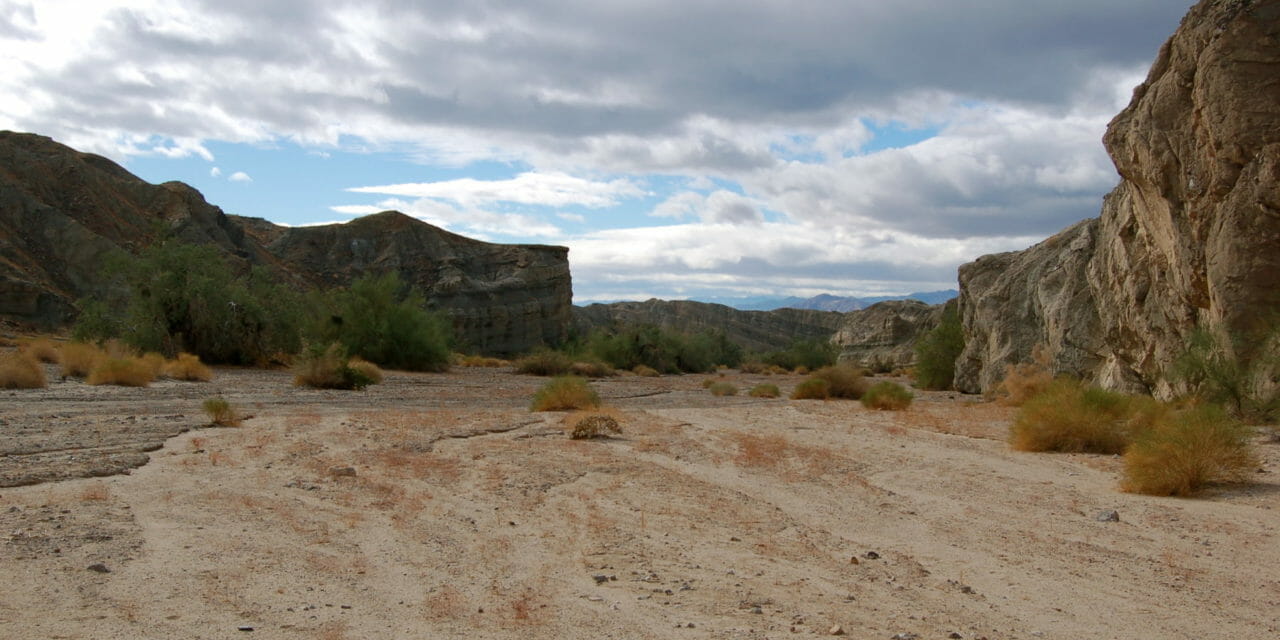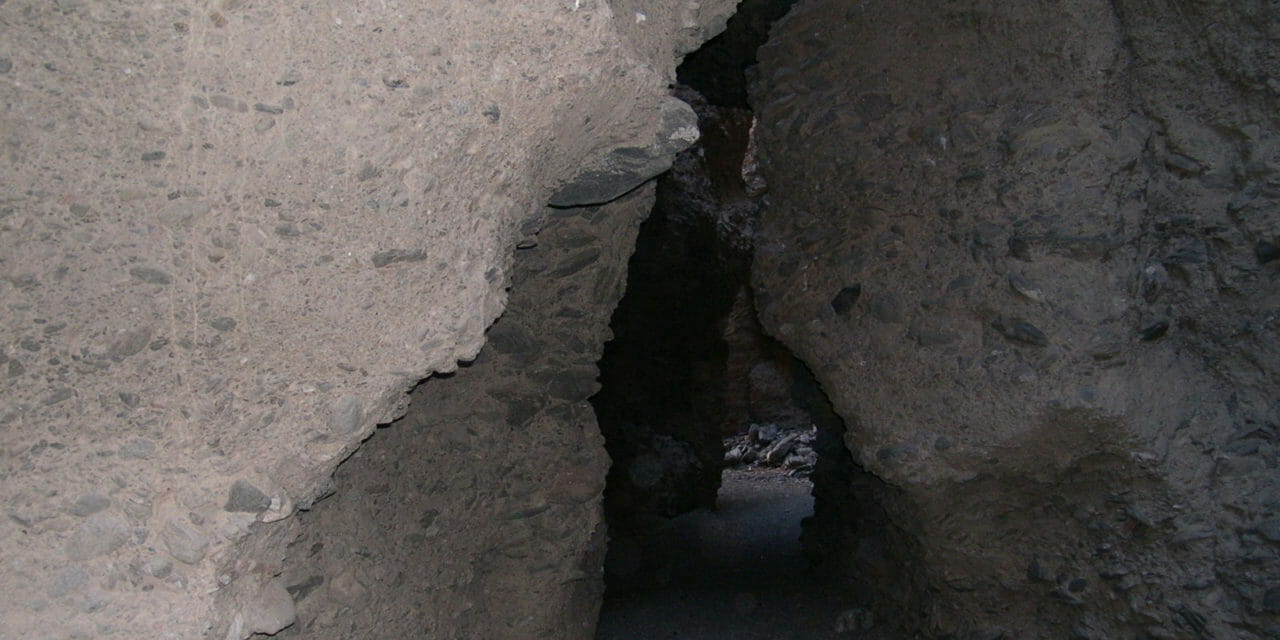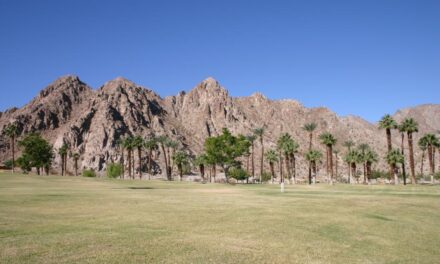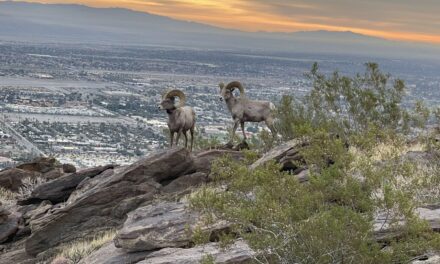Day hikers can do a little spelunking in the Coachella Valley via the Hidden Spring Trail.
While the Coachella Valley doesn’t have the limestone rock formations that allows for massive underground rooms like Mammoth Cave or Carlsbad Caverns, it does have the next best thing: grottos. You can find them in the Mecca Hills Wilderness that sits north of the Salton Sea.
The 5.1-mile round trip hike to The Grotto takes you through two oasis and past several impressive painted rock canyons. Because of the desert heat, the trail is best done in October through May. Never enter the box canyons if rain is forecast or for a couple of days after rain has fallen.
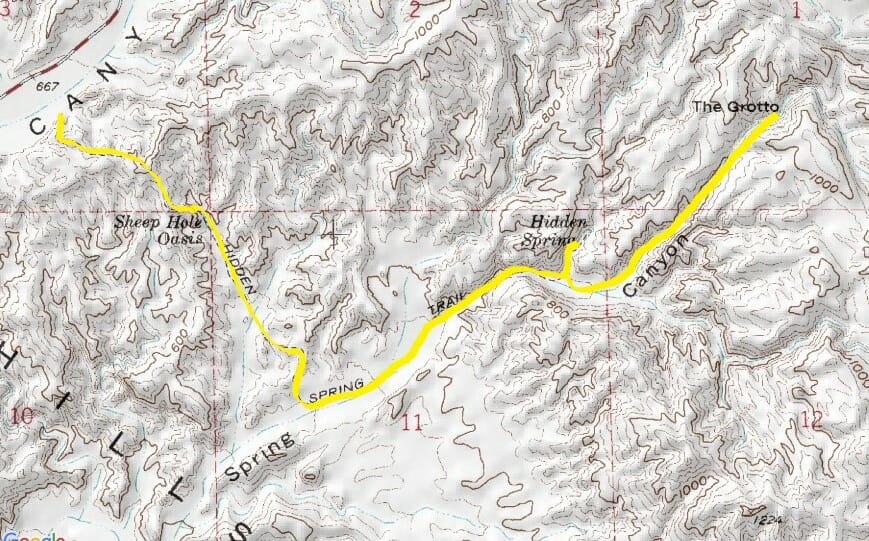 To reach the trailhead, take Calif. Hwy. 111 south to Mecca. Turn left/northeast onto Fourth Street and at the roundabout go right/southeast onto Hammond Road. The street naturally curves east and becomes 66th Avenue. East of town at Garfield Avenue, it becomes Box Canyon Road and curves northeast. The road then crosses the Coachella Canal and enters a broad sandy wash
To reach the trailhead, take Calif. Hwy. 111 south to Mecca. Turn left/northeast onto Fourth Street and at the roundabout go right/southeast onto Hammond Road. The street naturally curves east and becomes 66th Avenue. East of town at Garfield Avenue, it becomes Box Canyon Road and curves northeast. The road then crosses the Coachella Canal and enters a broad sandy wash
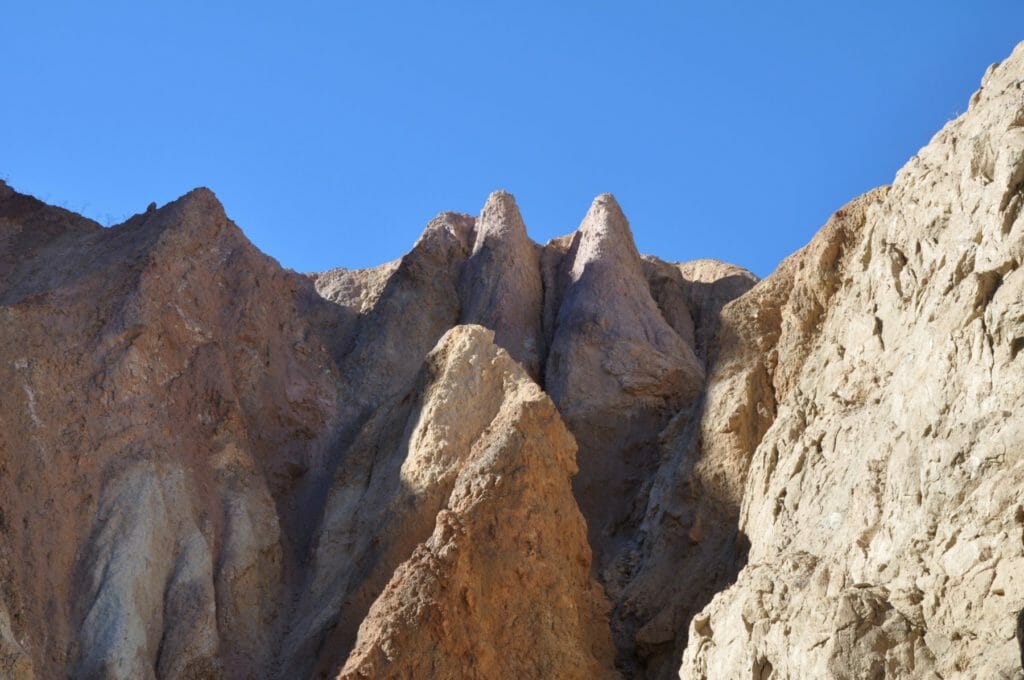
The trail cuts through badlands-like rock formations of mudstone and sandstone.
and finally Box Canyon.
While the road is paved, you’ll need to drive slower in Box Canyon. Turns can be tight, and a thin layer of sand often covers part of the asphalt.
A single wood post lets you known you’ve reached the parking area – which is just a sandy wash – for the trail to Sheep Hole Oasis. It’s roughly five miles from the canal. The trailhead on the road’s east side is marked by rocks placed in the ground across the canyon’s mouth.
Follow the canyon east. In about 350 feet, the trail climbs atop a ridge and curls south. You’ve entered a region of barren hillsides banded in earth tones, reminiscent of South Dakota’s Badlands.
In about a quarter mile, a small clump of fan palms appear in the canyon below. This is Sheep Hole Oasis, an important watering ground for bighorn sheep.
The trail descends to the oasis and then follows the canyon south. As the trail’s sandy surface suggests, water cuts out the canyons in these hills. The sandstone easily erodes when flashfloods rush through and with the wind constantly striking their walls.
In a little more than a third of a mile, watch for a trail cutting through a side canyon to the east. Take this up over a small ridge and then down into Spring Canyon.
Upon entering the wide wash, go east and follow it as it turns northeast. When reaching another split, about a third of a mile up the wash, go right/northeast. The canyon here narrows.
Geographically, the Mecca Hills mark the Coachella Valley’s eastern edge. They formed as the Pacific Plate to the west of the San Andreas Fault slid past and under the North American plate. This lifted and folded the North American plate here. Water and wind then carved the sandstone into a series of clefts and gorges.
In another third of a mile is a small slot canyon heading north. Enter it.
The trail winds around and scrambles over boulders, leaving you at Hidden Spring, another oasis. As with Sheep Hole, this is an important water source for local wildlife. Hidden Spring appears a but more lush than Sheep Hole if only because this canyon is smaller.
Return to Spring Canyon and go left/east. (You’ve technically left the Hidden Spring Trail.) In about 500 feet, turn left/northeast into another slot canyon. The canyon walls here mainly consist of small stones stuck in sandstone.
In 0.75 miles, the trail reaches The Grotto. A grotto is a small cave that usually floods during rainfalls. Erosion in this steep mud and slot canyon created the cave-like formation.
Feel free to climb into The Grotto. It’ll be pitch black inside, so first break out a flashlight. The other end comes out just a bit farther north in the same slot canyon. Once you’ve reached the other side, head back through The Grotto and retrace your steps back to the parking lot.
There are other grottos in the Mecca Hills, and some hikers have fashioned loop trails out of the many connecting paths to see all of them in a single walk. That adventure requires hiking several miles, though.
Most of the trail is exposed to the sun, so you’ll definitely need to don sunhat, sunglasses and sunscreen. Bring plenty of water. Because of the cave and boulders to it, you may want to carry gloves as well.

